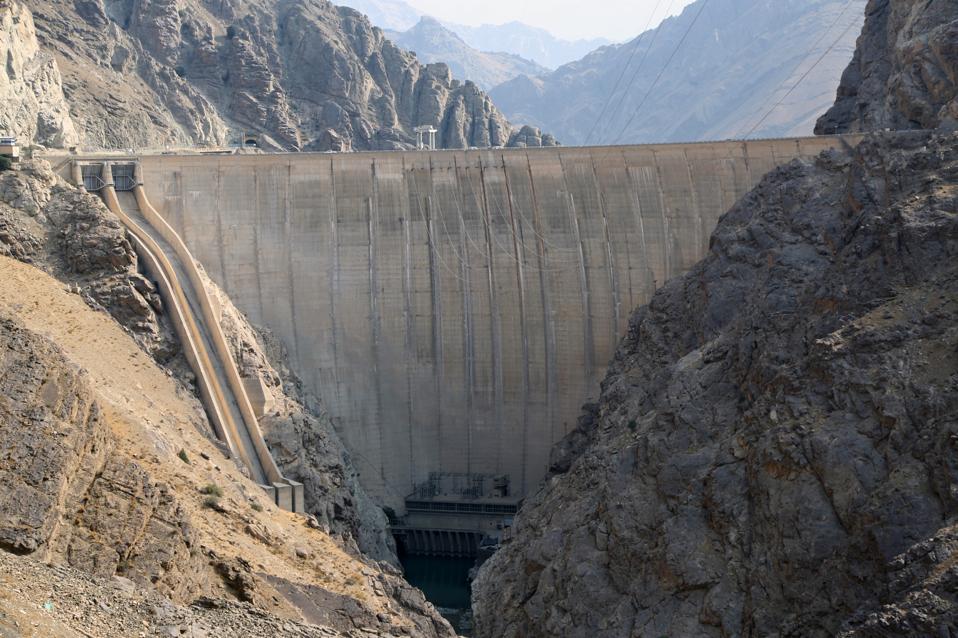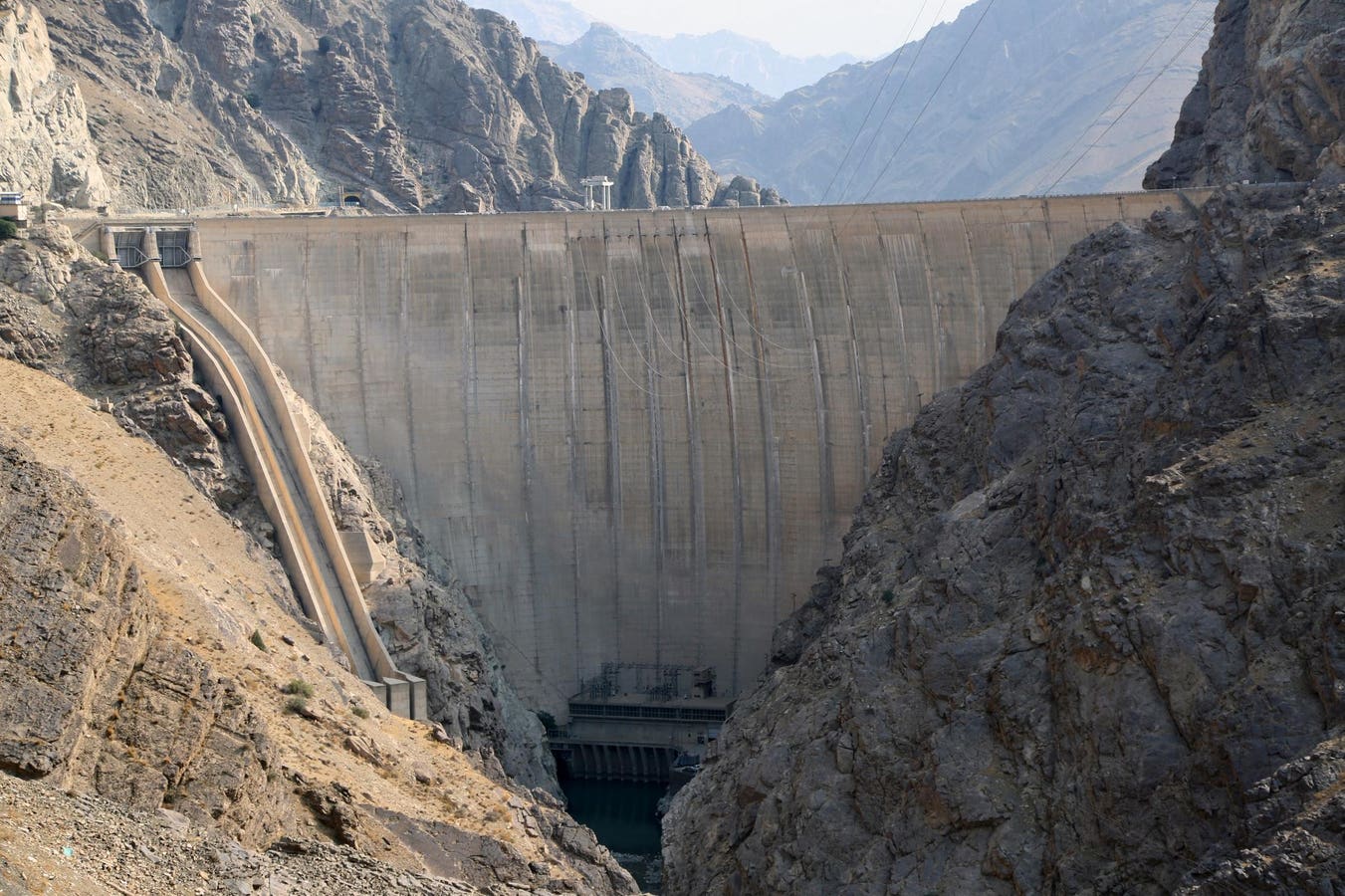
29 July 2025- Amir Kabir Dam, one of Tehran’s main water reservoirs, is seen during a worsening drought, with water levels at historic lows- (Photo: Fatemeh Bahrami/Anadolu via Getty Images).
Anadolu via Getty Images
Rivers are drying up across Iran, snow has vanished from mountaintops, and rainfall has hit record lows. The reservoirs supplying Tehran are now at less than 5% capacity, with officials warning the capital could run out of water in less than two weeks.
As the country of more than 80 million faces its worst drought in sixty years, some Iranians on social media are claiming that neighboring countries are “stealing” their rain clouds. Authorities have previously made similar allegations, accusing Turkey, the UAE and Saudi Arabia of diverting clouds away from Iran to their own skies. In recent months, an official has gone so far as to accuse the United States and Israel of deliberately manipulating the weather to cause drought.
All claims have been rejected by Iran’s Meteorological Organization as well as scientists who have said that “stealing clouds and snow” is not possible.
Though the subject of “cloud theft” is not new, part of the reason it has resurfaced is because of the minimal levels of precipitation in Iran. Since the start of the water year in September, the country has recorded just over 2 millimeters of rain — 75% less than the same period last year — with 21 provinces seeing no rain at all.
Scientists, however, attribute the shifts in rainfall to a combination of factors, including consecutive years of drought that have weakened weather systems, deforestation, and the drying of wetlands, all of which could reduce atmospheric humidity. Climate change and rising temperatures are also worsening the situation by increasing evaporation rates.
That said, Iran’s challenges go far beyond declining rainfall. The country is experiencing a deepening water crisis driven largely by decades of mismanagement, with more than 90% of its water extracted for agriculture and thousands of illegal wells depleting groundwater reserves.
Iconic bodies of water such as the Hoor al-Azim wetland in Khuzestan and Lake Urmia between West and East Azerbaijan have shrunk dramatically, fueling more intense sand and dust storms that send thousands of people to hospital each year with respiratory illnesses and harm livelihoods.
Amid this crisis, Iranian officials have turned to cloud seeding for help— a weather modification technique that involves dispersing particles like silver iodide into existing clouds, causing water droplets to cluster around them, increasing the likelihood of rain. But for cloud seeding to work, clouds must already contain at least 50% moisture, a condition that is increasingly rare in the arid climate of the Middle East.
Cloud seeding is practised in many countries around the world. China did it during the 2008 Beijing Olympics to control the weather, and India has sometimes done it to manage its air pollution. Last month, the government of New Delhi attempted to reduce the severe smog with artificial rain, efforts which failed partly because the clouds did not have enough moisture for the procedure to work.
Back in Iran, the Ministry of Energy announced that cloud seeding operations began this fall using aircraft and drones, initially targeting areas around the Zayandeh-Rud River in central Iran and then expanding onto other parts of the country in need of rain.
But studies show that cloud seeding can backfire if the conditions aren’t right, and winds can easily push the clouds away — so the rain might end up falling somewhere totally different from where it was intended.
Experts in Iran’s water sector have said the technique will probably not have any tangible impact, especially because many of the clouds currently forming over parts of the country don’t have the necessary moisture to meet the criteria.
Meanwhile, Iran’s environmental problems are only getting worse. In places like Isfahan, schools, roads, and cultural heritage sites are at risk of sinking because of widespread land subsidence. In Tehran, the majority of dams supplying drinking water are empty, with President Masoud Pezeshkain warning that water rationing and evacuations could become a possibility in the coming months.
With no rain in sight and water resources largely depleted, Iranians are searching for answers — but experts say those answers won’t be found in measures like cloud seeding or “praying for rain,” as some officials have suggested.
They say the solution to Iran’s water crisis will require, among other fundamental changes, diversifying the economy and creating jobs outside of agriculture, and rethinking foreign policy that currently limits Iran’s access to trade and technology — along with better coordination among the Ministry of Energy, the Ministry of Agriculture, and the Department of Environment.
In the end, accusations of “cloud stealing” or “weather manipulation” may serve as a brief public distraction — but the real problem is far more complex and much closer to home.

